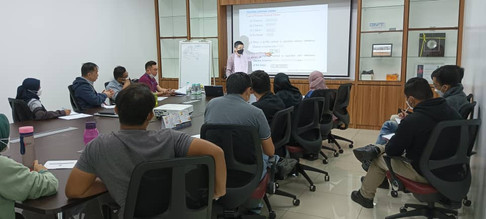TSY In House Training #446: Essential Geometric Dimensioning & Tolerancing (GD&T)
- Sunny Tang
- Jul 2, 2023
- 2 min read

Geometric dimensioning and tolerancing is an international engineering drawing system that offers a practical method for specifying 3-D design dimensions and tolerances on an engineering drawing. Based on a universally accepted graphic language, as published in national and international standards, it improves communication, product design, and quality.
Therefore, geometric dimensioning and tolerancing is accepted as the language of dimensional management and must be understood by all members of the dimensional management team. Some of the advantages of using GD&T on engineering drawings and product data sheets are that it:
Removes ambiguity by applying universally accepted symbols and syntax.
Uses datums and datum systems to define dimensional requirements with respect to part interfaces.
Specifies dimensions and related tolerances based on functional relationships.
Expresses dimensional tolerance requirements using methods that decrease tolerance accumulation.
Provides information that can be used to control tooling and assembly interfaces.
Geometric dimensioning and tolerancing provides a comprehensive system for symbolically defining the geometrical tolerance zone within which features must be contained.
It provides an accurate transmission of design specifications among the three primary users of engineering drawings; design, manufacturing and quality assurance. This language contains all relevant details involved in fabrication, including dimensions, tolerances, definitions, rules and symbols that communicate a component’s functional requirements, in alignment with ASME Y14.5M-2018 Standard.
Date: 26th & 27th June 2023
Venue: Grand Venture Technology Sdn. Bhd., Simpang Ampat, Penang
Course Objectives:
Following the completion of the course you will have:
Engineering, design, drafting, quality, dimensional inspection, and manufacturing should be trained to interpret, and as appropriate for their profession, apply GD&T.
All of these professions utilize drawing interpretation and application knowledge to execute their responsibilities. Parts and procurement personnel should have some knowledge of GD&T to understand how to process a mechanical drawing for quote.
Training personnel in the interpretation and application of GD&T will effectively reduce product design to market time, and production costs.
Pre-requisite:
Participants should have basic engineering blueprint reading skills.
Who Should Attend:
Machine operators, Technicians and Engineers and those who are involved in Design and Interpretation of Mechanical Drawings.
More Pictures:
Feel free to contact TSY Consultancy by Call / WhatsApp to +6012-6243921 or email to marketing@tsy.my
Cheers.






